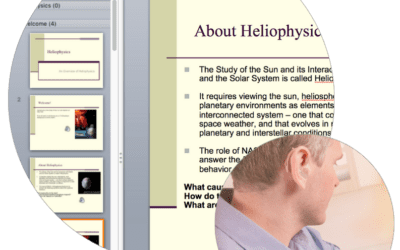Section 508 compliance can be confounding.
Compliance matters range from very simple things (e.g. ensure alternative text on images) to very technical (e.g. what html tag is used for the ‘question stem’ portion of a multiple choice question…).
That said, it is not impossible and compliance does benefit all learners.
Feel free to point out any issues, raise questions, etc., on the thoughts below. I hope it helps!
Here is the most important takeaway…it is up to the vendor to provide Section 508-compliant content to the government.
Different agencies (State, DOT, etc.) may have slightly different interpretations, guidelines, or processes, etc. However, Section 508 compliance is part of the FAR. As such, even if Agency X “accepts” content from a vendor, IF there is a civil rights action taken as a result of non-compliant content (e.g. a person using a screen reader cannot access the content, complete the course, etc.) THEN the vendor is ultimately responsible.
IF Lawyers can/do get involved, THEN it goes rapidly downhill from there.
Within a given agency, any particular “sub-organization” (e.g. APHIS, RD, NRCS, etc.) may have its own Section 508 acceptance process. As implied “passing” one groups (e.g. OCIO:EAS) process does not automatically give one a “pass” for a sub-organization. Does passing one group’s review help at all? Sure it does. That said, in CourseAvenue’s experience, different groups range from “very lax” to “very stringent” in their review process. Obviously getting a green light from a “very lax” organization won’t help much/at all when a more stringent review is undertaken. For what it’s worth, having significant institutional know-how about Section 508 compliance is how CourseAvenue has dealt with the varying levels of compliance validation.
A VPAT is an explanation of “how” a given vendor’s information and communication technology (“ICT”) meets Section 508 standards. While some vendors use the VPAT to declare areas where their products fall short of conformance, that declaration [of non-compliance] does not exempt one from still having to meet the Section 508 standards. For example, if one were to declare in a VPAT that their videos have no closed-captioning – that does not exempt the vendor from having to provide the captions. Again, the VPAT is intended to be a guide for federal customers so they can understand how a vendor meets Section 508 standards. In this fictional example of “videos not being closed captioned” – a federal customer, after seeing that in a VPAT, would/should simply disqualify the vendor for non-compliance.
Any given piece of ICT (e.g. a “course”) is either Section 508 compliant or not.
As an aside, CourseAvenue has found that first determining if a course is “inaccessible” is a much quicker process than doing a complete assessment of its “accessibility.” As needed, this topic can be a discussion in another thread.
Can there be different interpretations of some detailed aspects of Section 508 compliance in a given course? Sure. That is understood but represents a small percentage of the overall compliance landscape. Overall, it is not acceptable to put out non-compliant (or “questionably compliant”) ICT and then rely on updates or fixes to remedy deficiencies as they are discovered.
Might there be a case where a fix and/or update to the content is needed? Sure. However, fixes and such should be the exception rather than the rule.
If Section 508 compliance deficiencies do become the norm, then we go back to the top of this list where “IF lawyers can/do get involved, THEN it goes rapidly downhill from there.”




